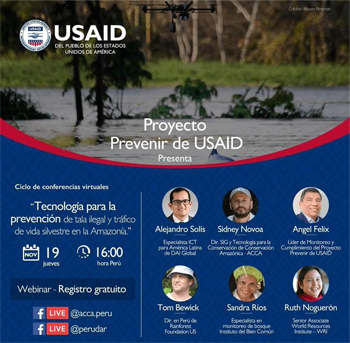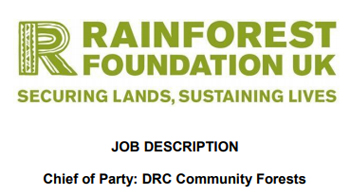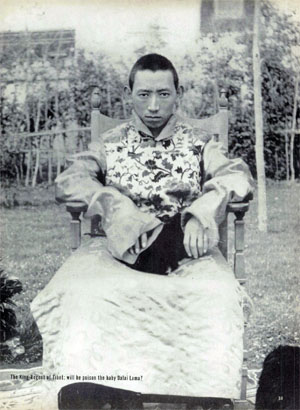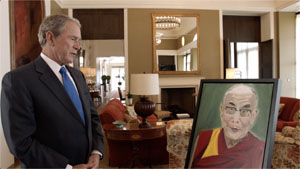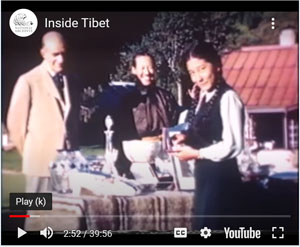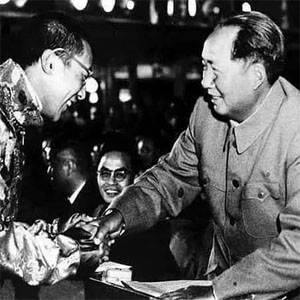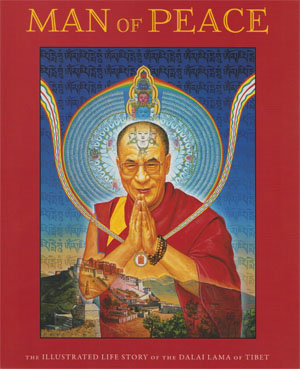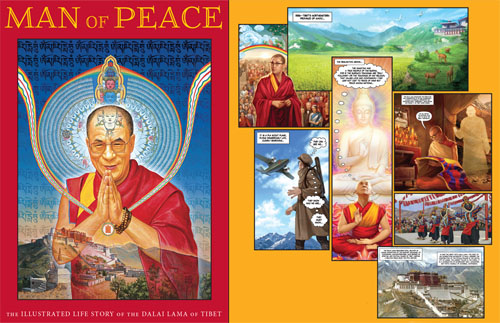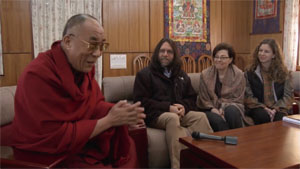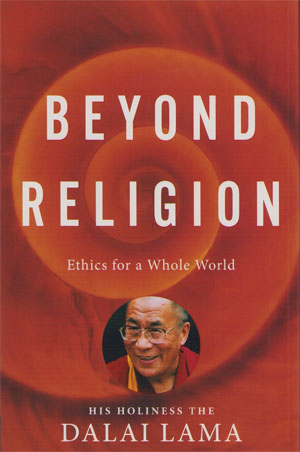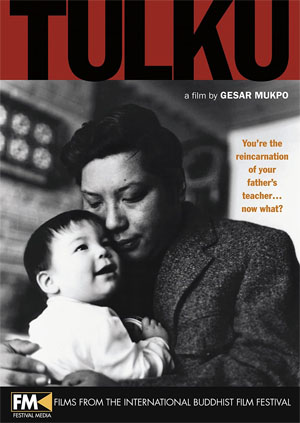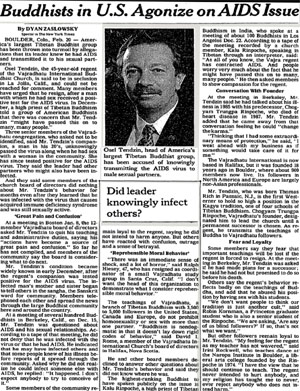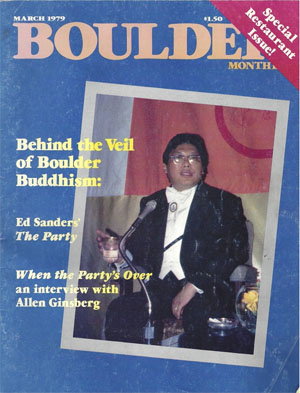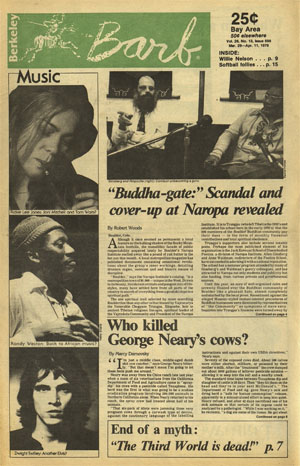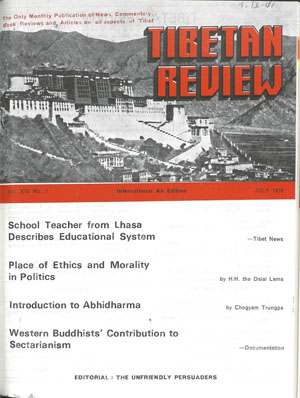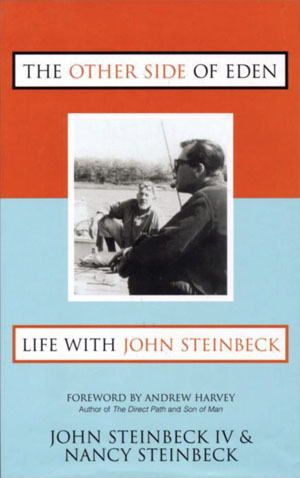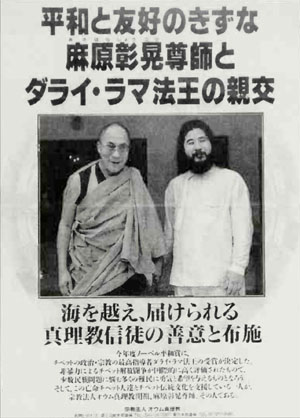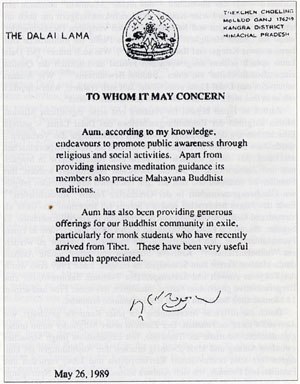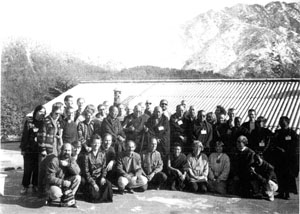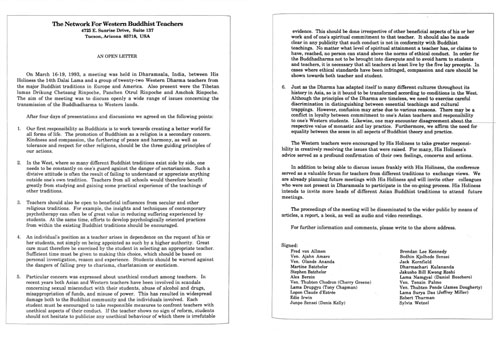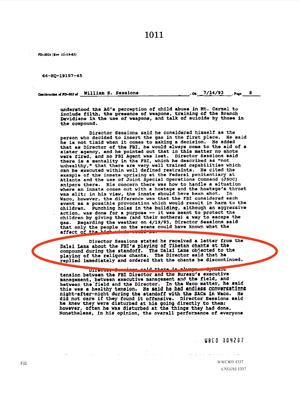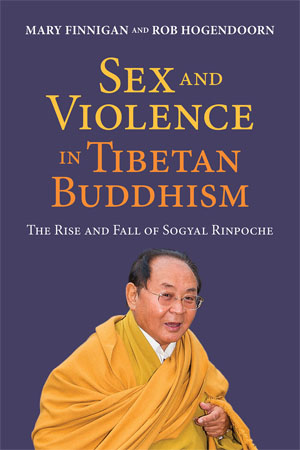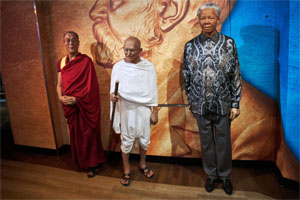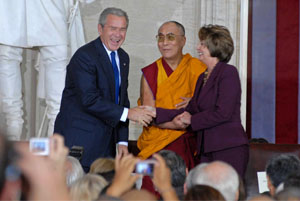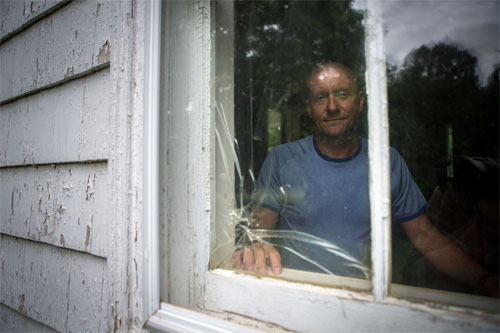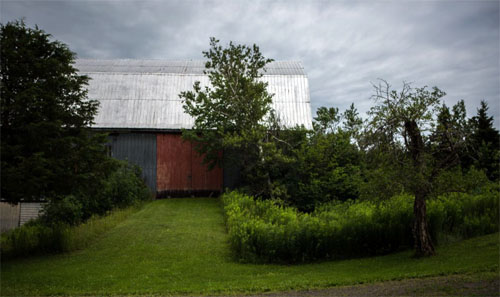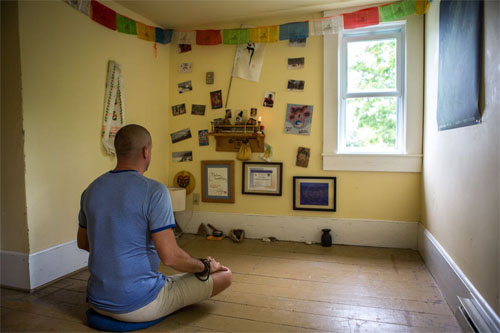by Wikipedia
Accessed: 12/15/20
This article may rely excessively on sources too closely associated with the subject, potentially preventing the article from being verifiable and neutral. Please help improve it by replacing them with more appropriate citations to reliable, independent, third-party sources. (July 2020) (Learn how and when to remove this template message)
Rainforest Foundation US
@RainforestUS
Join us today!!
RFUS's Peru Director
@tomrfus
will be discussing how #indigenous peoples detect illegal #deforestation and protect the #rainforest using technology.
This virtual conference is organized by USAID Peru.
Pencil Register here: https://bit.ly/3pInJpo
#ProtectAmazonia
10:19 AM · Nov 19, 2020
The Project: USAID Funded Improving Livelihoods and Land Use in the Democratic Republic of Congo through Community Forests
The adoption of the Community Forests Decree in 2014 and its main bylaw in 2016 in the Democratic Republic of Congo (DRC) is arguably the most significant legal reform related to tropical forests and forest peoples’ rights in recent years. This framework could impact as many as 40 million forest-dependent people and with tens of millions of hectares potentially available to develop pro-poor, community models of forest management.
Since its creation, RFUK has been continuously advocating and supporting the development of community-based forest management in the Congo Basin – something that is now widely recognised as being key to achieving delivering strong conservation and development outcomes. Under a DFID (now FCDO) funded project (2016-2019), RFUK headed a consortium of Congolese and international NGOs that played a central role in laying the foundations for community forestry in DRC. The project facilitated the development and adoption of the National Strategy for Community Forestry; consolidated the Multi-stakeholder Roundtable for Community Forestry as a deliberative policy making body; accompanied nine communities to apply for their community forest concessions; trained and built capacities among civil society and government officials at all levels; and produced an ground-breaking body of resources, studies and tools to inform best practice in DRC and beyond.
USAID and other donors are now supporting RFUK and our consortium partners to build on these efforts to trigger a new phase of development of community forestry in DRC. The project, which will run from September 2020 to September 2025, has the central objective to consolidate community forests as a viable forest use model that enhances livelihoods while protecting forests. To this end, the project will pursue four main strands of work:
• Promoting land use planning, sustainable management and income generating activities in pilot community forests in Equateur, North Kivu and Maniema provinces;
• Tackling deforestation and protecting biodiversity in target sites;
• Advocating for the continued improvement of the legal framework and promoting transparency and good practice;
• Building capacities in government and local civil society.
Activities will be implemented in the field by a consortium of Congolese NGOs based in Kinshasa, Goma, Mbandaka and Kindu...
Responsibilities
The DRC Chief of Party (COP) will be based in Kinshasa and will have the overall responsibility of coordinating project activities on the ground, liaising with partners on a daily basis and leading on policy aspects of the project whilst being the main point of contact for the donor, the USAID CARPE office in Kinshasa.
The post-holder will work closely with the London based project team, led by the RFUK CF Project Coordinator and the Project Finance and Admin Officer. S/he will also have a close working relationship with RFUK’s Programmes Finance, Admin and MEL Coordinator, Tech team, Policy team and additional staff and consultants in the Programmes Team...
1. Project management
• Oversee the implementation of the project on the ground in line with strategy, agreed budgets, logframe, work plans and procedures in coordination with the DRC CF Project Coordinator.
• Manage the relationship with USAID (CARPE team, based in Kinshasa) under the donor’s principle of “substantial involvement”, maintaining regular communications with the donor and keeping them regularly informed and involved in the execution of the project. ...
PERSON SPECIFICATION
Detail / Essential / Desirable
Knowledge and Experience / Master’s Degree in law, anthropology or international development or a related
subject or equivalent professional experience. / Experience managing USAID projects.
-- Job Description: Chief of Party: DRC Community Forests, by Rainforest Foundation UK: Securing Lands, Sustaining Lives
Miles Axe Copeland III (born May 2, 1944) is an American music and entertainment executive and former manager of The Police. Copeland later managed Sting's musical and acting career. In 1979, Copeland founded the I.R.S. Records label, producing R.E.M., The Bangles, Berlin, The Cramps, Dead Kennedys, The Alarm, The Go-Go's, and others.
Background
Copeland was born in London, England, to Miles Axe Copeland, Jr., a CIA officer from Birmingham, Alabama, United States, and Lorraine Adie, a Scot who worked in British intelligence. The family lived throughout the Middle East, in particular Syria, Egypt, and Lebanon. At an early age, Copeland and his brothers were fluent in Arabic.
Copeland attended Birmingham-Southern College in Birmingham, Alabama, in 1962. He graduated with a degree in history and political science. From 1966 to 1969, Copeland attended the American University of Beirut, earning a degree in economics. This was also where he promoted his first concert. After college, he moved to London, met two progressive rock musicians at a club, and helped them form Wishbone Ash.
BTM and Illegal Records
In 1974, Copeland founded the management agency and record label BTM (British Talent Management) and signed a number of progressive rock acts such as Squeeze, Renaissance and Curved Air. In the summer of 1975, he organized a multi-band tour of European music festivals, named Star-Trucking, which featured several BTM bands as well as Soft Machine, the Mahavishnu Orchestra and Lou Reed. However, Reed's failure to appear at any of the shows and other logistical issues resulted in significant losses for Star-Trucking, and ultimately to the failure of BTM. In 1976, BTM closed down.
BTM's end coincided with the beginning of the UK's Punk/New Wave movement and led Copeland to co-found Illegal Records, Deptford Fun City Records, New Bristol Records, and to sign the Cortinas, Chelsea, and the Models to Step Forward Records in 1977.
The Police
In 1978, Copeland became manager of his brother Stewart's band, The Police. Copeland shepherded the group to become one of the biggest bands of the 1980s, peaking with a concert for 70,000 people at Shea Stadium and the number one single for 1983, "Every Breath You Take".
Surveillance was never so sexy!
He continued to manage Sting through seven solo albums. Copeland was not, however, included in the reunion era of The Police, leading to a 2007 interview in which Copeland lamented that money was the issue.
I.R.S. Records
The success of The Police and the novel methods used to popularize them enabled Copeland to found I.R.S. Records through a deal with A&M Records. Copeland's I.R.S. label had hits with the Buzzcocks, R.E.M., The Cramps, Fine Young Cannibals, The Bangles and many others, including a number one album with his label's group The Go-Go's.
Copeland International Arts
Copeland owns and operates CIA (Copeland International Arts), which includes the Bellydance Superstars, Celtic Crossroads, Otros Aires, Zohar, and Beats Antique. Much of the CIA catalog initially included Middle Eastern, world music, Irish, tango, flamenco, and Polynesian styles. The label later signed mainstream artists.
Personal life
Another of Copeland's brothers, Ian Copeland, was a booking agent who described much of the New Wave adventures of Miles, Stewart and himself in his book Wild Thing.[9]
-- Miles Copeland III, by Wikipedia
Stewart Copeland on New Podcast ‘My Dad the Spy,’ How He’s Spending His Lockdown: In his Audible series, the former Police drummer sets out to uncover the truth about his CIA-agent father
by Angie Martoccio
Rolling Stone
October 20, 2020

Rainforest Foundation
Founded: 1987
Type: Non-governmental organization
Focus: Environmentalism
Location: New York City, United States
Area served: Global
Method: Grant-making, Lobbying, research
Key people: Sting, Trudie Styler, Franca Sciuto, Li Lu
Revenue: $ 1,234,981 (2006)
Employees: 155
Website: rainforestfund.org
The Rainforest Foundation Fund is a charitable foundation founded in 1987 and dedicated to drawing attention to rainforests and defending the rights of indigenous peoples living there.[1]
The fund and its three sister organizations (Rainforest Foundation UK, Rainforest Foundation US, and Rainforest Foundation Norway) support indigenous rainforest peoples to assert and defend their rights, to define and promote sustainable development in their communities, and to challenge the activities and practices of governments or other entities which damage their environment and lands. The programs and projects are developed in partnership with local communities and representative indigenous NGOs.
History
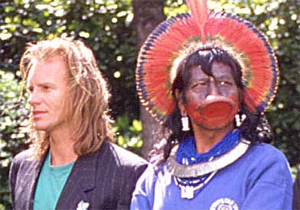
The Chief Raoni and Sting in 1989, in Paris.
The Rainforest Foundation Fund was first founded in 1989 as the Rainforest Foundation International, by Jean-Pierre Dutilleux, Sting and his wife Trudie Styler after an indigenous leader, Raoni, of the Kayapo people of Brazil made a personal request to them to help his community protect their lands and culture. Since then, the Rainforest Foundation Fund, working together with its sister organizations, has funded projects that have protected a total of 28 million acres of forest in 20 different rainforest countries around the globe.[2]
Around 1990, Danny Paradise introduced him to yoga, and he began practising Ashtanga Vinyasa Yoga series, though he now practises Tantra and Jivamukti Yoga as well. He wrote a foreword to Yoga Beyond Belief, written by Ganga White in 2007. In 2008, he was reported to practise Maharishi Mahesh Yogi's Transcendental Meditation technique.
-- Sting (musician), by Wikipedia
In 1989, Styler and Sting started the Rainforest Foundation Fund, an organisation devoted to protecting rainforests and their indigenous peoples, and since 1991 she has produced regular Rock for the Rainforest benefits at Carnegie Hall. As a UNICEF [United Nations International Emergency Fund] Ambassador, Styler has also raised millions for their projects around the globe.
-- Trudie Styler, by Wikipedia
Essentially, Goodwill Ambassadors are marketing personnel who volunteer to contribute to the brand recognition of UNICEF. However, just because they are not formal ambassadors does not mean that Goodwill Ambassadors do not do good work.
A UNICEF Goodwill Ambassador is commonly a celebrity with a global audience and name recognition. UNICEF officials have chosen celebrities such as Millie Bobby Brown to represent them. Millie Bobby Brown is currently the youngest UNICEF Ambassador and plans on using her position to bring attention to children’s rights. Specifically, Brown wants to focus on lack of education, lack of safe places to play and learn, violence against children, and the effects of bullying.
Previous to Brown, celebrities such as Audrey Hepburn have served for UNICEF. During her service, Hepburn visited Ethiopia after years of civil strife and drought caused a severe famine. Hepburn visited the United Nations emergency sites and went back to The United States of America and Europe to talk to the media about what was happening in Ethiopia in search for continued support of the United Nations’ efforts in Ethiopia. Later in her service as a UNICEF ambassador, Hepburn testified before the United States Congress on behalf of UNICEF and worked on the World Summit for Children.
-- Who are UNICEF Ambassadors?, by American Model United Nations
Trudie Styler, film producer, environmentalist, humanitarian and actor, is a long-standing supporter of Unicef.
She was appointed Ambassador in July 2004. The following year, in November 2005, Trudie received the highest accolade bestowed on a Unicef Ambassador – the Danny Kaye Humanitarian Award – for her commitment to Unicef.
In 2005, Trudie visited Sri Lanka to witness emergency education being provided by Unicef and the following year Jemima Goldsmith and Trudie visited projects supporting Unicef’s Build it Back Better campaign in Pakistan after the earthquake in 2005.
Through fundraising events Trudie has helped to raise millions for Unicef’s work. You can also help us reach more children around the world to keep them safe and help them grow up happy and healthy.
Following a Unicef trip to Ecuador in 2009, Trudie has been committed to supporting water projects with Unicef and the Rainforest Fund to deliver clean water to communities living in the highly polluted areas of the Ecuador rainforest.
On 20 October 2011 Trudie Styler and Sting were presented with the Children’s Champion Award in Boston. This award was presented to them by Unicef to honour the exceptional commitment they have shown to improving children’s lives across the world.
Trudie continues to be an advocate for Unicef.
-- Trudie Styler: UNICEF UK Ambassador, by unicef.org
Philosophy
The mission of the Rainforest Foundation Fund is: "to protect and support indigenous people and traditional forest populations in their efforts to protect their environment and fulfill their right to a secure, healthy and ecologically sound environment." The Fund believes that environmental degradation necessarily violates human rights to life, health and culture.
The international community widely accepts that indigenous peoples are holders of a specific set of rights and are also the victims of historically unique forms of discrimination, and it enshrined this idea in the United Nations Declaration on the Rights of Indigenous Peoples, adopted by the UN General Assembly in 2007.
The Rainforest Fund claims that its work is motivated by its recognition of a substantial disconnect between such declarations made by the governments of the world in an international forum, and the actions that those governments undertake in their own countries.
They mention as an illustration the controversy surrounding the Belo Monte Dam in Brazil: "While at the United Nations discussions are underway on the crucial issue of climate change, and governments are finally realizing that they have to change their pattern of development, in the Brazilian Amazon plans are well advanced to build environmentally destructive mega-dams along the Xingu River, the last of the great Amazon rivers in a good state of conservation." .[3][4][5][6]
Method
The Rainforest Foundation Fund usually covers only about 80% of a project's total budget, leaving its grantee responsible for finding the remaining 20%, to avoid over-dependency on just one funding source. The fund grants money on a three-year basis, but will extend funding up to five years in certain circumstances. Grant-recipient's projects are evaluated annually.
The Rainforest Foundation Fund works with an extremely small staff, with only a chairperson (Franca Sciuto) and a part-time financial director/treasurer (Li Lu). The chairperson serves as a volunteer, and handles all project screening, interim assessments and post-project evaluations. Final decisions on projects and fund disbursement are made by the Rainforest Foundation Fund board.[7]
Rather than administrating large projects itself, the Fund believes that the primary beneficiaries, the indigenous peoples, should also be the primary administrators of the projects. The sister organizations in the US, UK and Norway work directly with indigenous organizations to ensure they are equipped with the administrative structures, technology and trained leadership needed to carry out their projects.
Current work
The Rainforest Fund supports projects that defend indigenous people's rights to their lands and to live in a healthy environment.
The Fund assists rainforest indigenous communities by helping them achieve official demarcation of their territories and then ensuring they are able to effectively defend their communities from violations of their rights including illegal logging, mining, other land invasions, and social disenfranchisement/denial of their rights as citizens.
Many of their projects work to uphold the right of indigenous peoples to grant or to withhold. Then their free, prior and informed consent to projects that will affect their land, resources and livelihoods, and to ensure that indigenous communities are given full information and have a voice in project negotiations and the policy design process.
It also makes grants to programs that assist communities in designing sustainable development strategies, and in strengthening their representative organizations.
Their grants support public awareness programs, technological training, community development, organizational capacity building, sustainable resource management, legal defense, and local, national, and international policy and advocacy.
2011 Supported Projects:[8]
AFRICA:
• Central African Republic
• Cameroon
• Democratic Republic of the Congo
--Working across the three countries of the Congo Basin, this project focuses on the development of REDD policies designed to mitigate climate change. It works to ensure indigenous peoples have a voice in those policies, share in benefits, and have their land rights respected. The project also involves participatory mapping, advocacy surrounding national parks and community forestry, and advocacy for the full implementation of the ILO Convention 169.
ASIA:
• Papua New Guinea
--'Land is Life Reform' – A project which supports the legal cases at the national level that are working to stop all new logging operations in the country.[9]
• Malaysia
--In partnership with the Orang Asli communities, this projects works to connect the indigenous people's with conservation networks in the broader civil society, to promote women's empowerment, and to provide capacity-building to organizational leaders as they advocate for indigenous rights.[10]
AMERICAS:
• Belize
--Working with the Mayan community and their NGO the Maya Leaders Alliance to obtain official recognition of nearly 500,000 acres of traditional lands and then to carry out the demarcation qualification process.
• Bolivia
--Supporting a project administered by the NGO Comunidad Viva to guarantee clean water access for the Ayoreo Community of Puesto Paz.
• Brazil
--Working with the Tiriyo, Kaxuyana, and Wayapi indigenous groups of northeastern Brazil to build the capacity of their representative organization, Apitikatxi, and to ensure that public policy respect the indigenous peoples' rights to maintain their cultures and traditions.[11]
--Supporting the Surui indigenous peoples in implementing a strategy for protecting their lands, the Surui Reserve, from illegal logging, thereby protecting the highly biodiverse Amazonian rainforest found on those lands. Also working with them to ensure proper implementation of their community's participation in a REDD program.
• Ecuador
--Supporting a project to assist the Orellana and Sucumbia indigenous peoples whose communities and environments are being negatively affected by oil exploitation – the project works to expose environmental abuse and defend indigenous rights to land, health, livelihood, and clean environment.
--The Fund is working in partnership with UNICEF Ecuador to work to provide clean water to the communities affected by the oil industries' activities in and around their lands, which have caused serious water pollution.[12]
--The Change Chevron Project, monitored by the Rainforest Action Network, works to put public and political pressure on Chevron to rectify the environmental damage its activities in the Ecuadorian Rainforest have caused.[13]
• Guyana
--Working with the national NGO the Amerindian Peoples Association to ensure that Guyanese indigenous communities are well-educated on climate change and REDD programs and that they have a respected and significant degree of participation in the design and implementation of those programs.
• Panama
--Working with the representative NGO of the Kuna people, FPCI, as well as the national indigenous NGO, COONAPIP, to build organizational capacity and ensure that Panama's indigenous peoples participate in the design of, have their rights respected by, and are appropriate beneficiaries of various national climate change and REDD programs.
--Working with the Wounaan people to achieve official land titles for over 470,000 acres of land belonging to 12 different communities and to assist them in defending their land and resources from outside threats.[14]
• Peru
--Supporting the Ashaninka communities in their effort to halt the construction of the Pakitzapango Dam which would affect their ancestral land over which they have official ownership. In spite of this, the government did not consult with the communities or receive their consent for the project.
--Working with the Kandozi and Sharpa indigenous peoples of Datem del Marañón in the Peruvian Amazon to ensure that their right to health care is respected and fulfilled by the State, particularly that the government work to address a Hepatitis B epidemic in their communities.
--The Rainforest Fund also recently undertook a special emergency project to provide support for the legal defense of the indigenous leaders facing charges from by the government due to the 2009 incident in Bagua, wherein police attacked the crowd after 55 days of nonviolent demonstrations supporting of indigenous rights, leaving 34 people dead. 109 cases were filed against 362 Peruvian indigenous leaders.[15]
Criticisms
In January 1990 the fund's first campaign came under fire by the French edition of 'Rolling Stone' magazine in an article that mentioned the failings of Dutilleux's previous work in the rainforest and criticized the organization for holding lavish fundraising banquets.[16]
The 'Rolling Stone' article was used as the basis for a documentary by Granada Television's 'World in Action' program. The show, called 'Sting and the Indians', was re-broadcast in the United States on the A&E cable network hosted by Bill Kurtis.[17]
The primary claim of both was that the project in Brazil was misrepresenting the facts to donors, as some of the Kayapo's traditional land was already "protected" within the Xingu National Park. In fact, the Xingu Park is actually a large indigenous-controlled area, the first in Brazil, so it is an indigenous territory, not a national "park". Moreover, the Fund's initial project supported demarcation of the Mengkragnoti Area, which is right next to/contiguous with the Xingu Park, and did not demarcate the park itself.
In 2002, 2003, and 2004 the US branch of the organization was given zero stars out of four by Charity Navigator, primarily because only 43-60% of funds during those years were spent on programs on the ground.[18] For example, in 2008 the US Foundation had total revenues of $1.27 Million of which only $404,000 went to 'Project Payments' according to the Foundation's very own 2008 IRS tax filings.[19]
However, since 2008, the Rainforest Foundation US has received four stars out of four, with an efficiency score of 38.93 out of 40.[20]
See also
• Deforestation
• Indigenous peoples
• Related charities such as the Prince's Rainforests Project, Save the Amazon Rainforest Organisation and the Rainforest Action Network
• United Nations Environment Programme
• Yayasan Merah Putih
• Environmental problems caused by deforestation
• Reducing Emissions from Deforestation and Forest Degradation
• Self-determination
• Traditional Ecological Knowledge
• Sustainable development
• Indigenous land rights
• Global warming
• Indigenous peoples of the Americas
• Amazon Rainforest
• Deforestation of the Amazon Rainforest
• Deforestation in Brazil
• Conservation movement
• Environmental movement
Footnotes
1. "Sting Issues Statement On Amazon Fires: "This Is Criminal Negligence On A Global Scale"". Stereogum. 2019-08-27. Retrieved 2020-07-09.
2. The Rainforest Foundation US "About Us Archived 2011-10-30 at the Wayback Machine"
3. Sarah Anne Hughes. "Brazil approves Belo Monte dam, despite fierce opposition, James Cameron Speaks Out" The Washington Post. 01 June 2011.
4. "Amazon Watch's 'Stop the Belo Monte Dam' Campaign Archived 2011-11-12 at the Wayback Machine"
5. Karen Hoffmann. "Belo Monte dam marks a troubling new era in Brazil's attitude to its rainforest" The Ecologist. 16 August 2001.
6. Reuters. "Brazil approves Belo Monte hydroelectric dam" guardian.co.uk, Wednesday 1 June 2011
7. Rainforest Foundation Fund 2006/2008 Report ""Archived copy" (PDF). Archived from the original (PDF) on 2012-04-12. Retrieved 2011-11-14."
8. Rainforest Foundation Fund Website "[1] Archived 2011-12-05 at the Wayback Machine"
9. The Conversation "Dodgy logging: are Papua New Guinea’s forests going the way of Indonesia’s?" 2 November 2011.
10. Center for Orang Asli Concerns "[2]"
11. NEWSLETTER OF THE INTERNATIONAL RANGER FEDERATION "The Thin Green Line Archived 2012-04-03 at the Wayback Machine" October–December 2005.
12. UNCIEF News "UNICEF National Ambassador Trudie Styler brings clean water project to Ecuador" 15 June 2009.
13. "Change Chevron Project Page Archived 2012-04-05 at the Library of Congress Web Archives"
14. nativefuture.org "Wounaan Take Land Rights Claims to Inter-American Commission on Human Rights" October 28, 2008.
15. Gregor MacLennan. "Bagua Anniversary: One Year After Violent Clashes in Peru, Situation for Indigenous Rights Little Improved Archived 2011-08-22 at the Wayback Machine" Commondreams.org. June 10, 2010.
16. Chris Campion. "Walking on the moon: the untold story of the Police and the rise of new wave rock." John Wiley and Sons, 2009. pp 237- 240 "[3]
17. Elaine Dewar. "Cloak of green." James Lorimer & Company, 1995. pp. 421 "[4]"
18. Ed Pilkington. May 7, 2008. "Sting charity criticized as he marks 20 years in rainforest activism." The Guardian.
19. http://www.box.net/shared/static/u38uok769j.pdf[permanent dead link]
20. "Charity Navigator - Rating for Rainforest Foundation US". Charity Navigator
External links
• Rainforest Foundation Fund
• Rainforest Foundation US
• Rainforest Foundation UK
• Rainforest Foundation Norway
****************************
Jean-Pierre Dutilleux
by Wikipedia
Accessed: 12/15/20
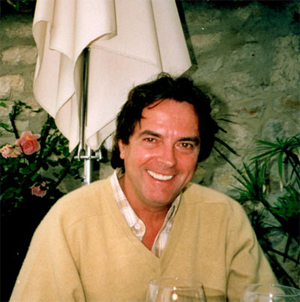
Jean-Pierre Dutilleux (born 13 October 1949) is a Belgian author, activist, film director,[1] actor and editor of films.
Career
During his 40-year career, Jean-Pierre Dutilleux has made thirty films, including a dozen in Amazonia, taken thousands of photographs and published six books.
Jean-Pierre Dutilleux rose to international prominence with his academy Award-nominated documentary, Raoni, an investigation of the complex issues surrounding the survival of the remaining indigenous natives of the Amazon Rainforest and indeed, of the Rainforest itself.
Shot on location and named after the forceful and savvy chief at its center, the film was narrated by Marlon Brando. The New York Times praised Raoni as a "sobering, sympathetic and technically expert documentary". With the fame accorded him by the film, both in Brazil and abroad, Raoni, the man, has become the prime spokesperson for all of Brazil's surviving native tribes.
A native of Belgium, Dutilleux earned a Bachelor of Arts degree in French and Literature from Saint Hadelin College in Liege, and later studied law, languages and economics at the University of Louvain. During his college years, Dutilleux traveled throughout North and South America, awakening passion and developing respect for the native tribes. In 1972, he served as assistant to Costa-Gavras on the production "State of Siege" in Chile. Two years later, at the age of 23, Dutilleux completed his first film, a study of natives of the Amazon.
In the years since, he has filmed and photographed over 50 tribes worldwide, produced a dozen films in the Amazon, sailed around the world, and documented countless unique adventures. Additionally, his work as a photojournalist has appeared in 100-plus magazines in dozens of countries.
On one of his visits to the Amazon, Dutilleux was joined by noted rock musician Sting, who was able to experience firsthand the indigenous tribes of the fast disappearing jungle. Together they authored articles exposing the fate of the native Amazonians which, fortified by Dutilleux's powerful photos, propelled the rainforest issues into the global spotlight. Encouraged by response to the stories, the pair created The Rainforest Foundation to support the Indians' fight for survival, launching an international campaign with a television spot starring Sting and produced and directed by Dutilleux. Accompanied by Chief Raoni, they embarked on a world tour and, in only 60 days, established local foundations in 12 countries, raising awareness and funds to protect the rainforest. In six recently published books, Dutilleux recounts these adventures and shares his remarkable photographs. The publicity and campaigning has to date secured the future of more than 25 million hectares of rainforest, not only in South America.
Controversies
Controversies regularly mark the career of Jean-Pierre Dutilleux since the release of his documentary film Raoni (1978).
As early as July 22, 1981, the Brazilian daily Folha de S. Paulo[2] stated that the FUNAI (National Indian Foundation, Indian affairs agency in Brazil) is behind the creation of a precedent-setting law, as a result of the problems encountered with the movie Raoni. The article, which explains that Raoni was the first commercial film in Brazil with the participation of Indians, claims that he "did not respect the agreement signed with FUNAI to transfer 10% of the profits to the Indians Txucarramae, of the Xingu River region." The article details the new criteria put in place by the FUNAI: "the Indians who will take part in the shootings will have to be paid and notified to the Union of the Artists of Rio de Janeiro and the FUNAI." According to Dutilleux, the allegations in this article are contradicted by a letter dated May 7, 1990 from Raoni's nephew Megaron Txuccaramae, who makes it clear that the Indians have received royalties from the Raoni film: "With this letter, we want to thank Jean-Pierre Dutilleux for his support to the Indians over the years. Since 1973, when we knew him, he is a great friend of the Indians. When he did the movie Raoni, in 1976, he was the first filmmaker to give the Indians royalties that we received directly from the Embrafilm distributor after he opened our first bank account." This letter, which was read to Raoni and approved by him in the presence of the counselor of the Belgian Embassy in Brasilia, was published in the book L'Indien blanc.
In January 1990, a few months after having traveled the world with chief Raoni and Sting, Jean-Pierre Dutilleux was profiled in an investigation by the French edition of Rolling Stone[3] magazine. The author, Mark Zeller, said that Dutilleux, close to bankruptcy before his meeting with Sting, enriched himself during their charitable actions. According to Dutilleux, Mark Zeller's allegations are contradicted by Megaron Txuccaramae's letter of May 7, 1990, in which he indicates that Jean-Pierre Dutilleux was not paid for his charitable actions.
On April 2, 1990, Britain's ITV Network broadcast an episode of the investigative TV programme World in Action, "Sting and the Indians",[4] in which Jean-Pierre Dutilleux was denounced by Sting about the book Jungle Stories (published by JC Lattès), which they wrote and promoted together during their charity tour. Sting said he has lobbied Dutilleux without success to return his generous advance on royalty rights to the Rainforest Foundation, created to help Brazilian indigenous peoples protect the Amazon rainforest. World in Action explained that Dutilleux kept the money and left the Rainforest Foundation after the episode. A note from the administrators of the Rainforest Foundation of April 2, 1990,[5] made public by the Association forêt Vierge in March 2017, states that if he has never received a cent from the Rainforest Foundation, "Jean-Pierre Dutilleux has received a lump sum for the repurchase of his photographs for the book Jungle Stories, in compensation of the costs of 16 years of travel, lodging, photographic expenses, repayments with rights holders, etc. He indicated his intention that all other royalties be returned to the Rainforest Foundation." In the same investigation, Dutilleux is accused by photographer Alexis de Vilar, co-founder with him of the charity Tribal Life Fund, of being at the origin of the disappearance of the receipts of a gala organized at the Chinese Theatre in Hollywood on March 28, 1979 to support the Raoni movie.
On September 21, 1991, Belgian newspaper Le Soir released an article entitled "The Director of FUNAI denounces the Raoni-Dutilleux campaign",[6] while Dutilleux had just launched a major fund-raising campaign from Belgium which he claimed with the consent of FUNAI. Sydney Possuelo, President-in-Office of FUNAI, declared: "Mr. Dutilleux is not and has never been authorized to raise funds on behalf of FUNAI, the Coordination of the Isolated Indians, or myself." On October 7, 1991, Brazilian daily newspaper Folha de S. Paulo took over the affair in its title "A Belgian exploits Indians in the Amazon and tries a $ 5 million scam",[7] saying that "the president of Funai, Sydney Possuelo, ended the scam, which promised individual donors and companies "rescue diplomas" of the Amazon." The article exposed that Jean-Pierre Dutilleux mentioned the embassy of Belgium as support for his fundraising campaign and concluded on this point: "the Embassy asserts that its name was misquoted."
On October 9, 2000, Época (Brazilian magazine) dedicated an article to Jean-Pierre Dutilleux, whom she nicknamed "the Belgian sorcerer".[8] The subtitle set the tone: "Who is Jean-Pierre Dutilleux, filmmaker who in three decades has earned fame and money by exploiting the image of Raoni and other Indians of Brazil". For example, it is claimed that Dutilleux illegally sold photos of indigenous on the internet. Less than three weeks later, the daily Gazeta do povo claimed that Jean-Pierre Dutilleux was banned by FUNAI from entering a reserve and specified that an investigation was opened against him "for sale of photos without payment of author rights".[9] The mentioned judicial procedure also emanated from a request for investigation from chief Raoni on the "fundraising carried out by Mr. Jean-Pierre Dutilleux outside Brazil, through abuse of the use of the name and the image of chief Raoni", especially with the French government.[10]
In 2012, it was said in the Brazilian documentary film Belo Monte Announcement of a War (Belo Monte, Anúncio de uma Guerra),[11] directed by André d'Elia, that the Association Forêt Vierge of Jean-Pierre Dutilleux held "hostage" chief Raoni and his two companions indigenous peoples, while they had come to campaign in Europe in September 2011 against the Belo Monte dam, to the construction of which French companies are associated.[12] In a sequence, Raoni confirms that Jean-Pierre Dutilleux "did not allow anyone to approach me" and shows a petition against Belo Monte[13] which Dutilleux and his team, he says, have tried to prevent the shed. It is also alleged that the same team would have tried to exchange the silence of Chief Raoni on the misdeeds of the Belo Monte project against a promise that the borders of a territory of his people are traced.
On August 12, 2016, kayapo leaders Raoni Metuktire and Megaron Txucarramae announced through a press release published on the official website and Facebook page of the Instituto Raoni[14] that they definitively cut any relationship with Jean-Pierre Dutilleux after several failures: "We recognize what Jean-Pierre Dutilleux has sometimes been able to bring to the level of the disclosure of our fight, but we have never appreciated his lack of respect, his opportunism and the way he exploited our image and the name of Cacique Raoni, to the point of damaging his reputation and jeopardizing his credibility". Jean-Pierre Dutilleux responded to these accusations via a video posted on YouTube[15] and on the website of the Association Forêt Vierge.[16]
On August 7, 2018, French NGO Planète Amazone accused Jean-Pierre Dutilleux in a statement[17] of having deliberately acted, "in Brazil and France", to destroy the confidence of his partners, saying that he "did not hesitate to use the name of an incumbent head of state in an attempt to obtain statements of denunciation from indigenous leaders against Planète Amazone, claiming that it was this head of state himself who demanded, prior to offer his support." Online correspondence refers to Albert II, Prince of Monaco as the mentioned head of state.[18]
In one of his films dedicated to the Toulambi tribe of Papua New Guinea, Dutilleux believes his film footage includes this tribe's first encounter with modern white men, and poses the possibility this may be the last time in history this can occur. A video of this film has been extensively posted in the internet, prompting much discussion and questions about this claim.[19] According to an article in the peer-reviewed Journal of Pacific History, the colonial archives indicate that the territory of the Toulambis had been visited by at least six patrols between 1929 and 1972. In itself that is very few and Dutilleux may be quite correct as certainly seems to be so when viewing the film.[20]
Dutilleux has worked intensively with thirty jungle tribes some of whom have only minimal contact with the outside world. He is working on a big-screen movie drama about an Amazonian tribe, which may include combining aspects of several tribes he knows, to tell a typical history of Amazonian tribes.
Filmography
• Raoni 1 award[21]
Books
Books published by Dutilleux:[22]
• Raoni, My Last Journey (2019)
• On the Trail of Lost Peoples (2015)
• Tribes: First World peoples (2013)
• Raoni: Memoirs of an Indian Chief (2010)
• Raoni and the First World (2000)
• The White Indian : 20 years of Amazonian Spell (1994)
• Raoni, an Indian Around the World in 60 days (1990)
• Jungle Stories, with Sting (1989)
References
1. "Movie Reviews". The New York Times. 12 July 2019. ISSN 0362-4331. Retrieved 14 July 2019.
2. article from the Brazilian daily Folha de S. Paulo, July 22, 1981
3. "Rolling Stone article- original text". http://www.rainforestfoundation.com. Retrieved 14 July 2019.
4. "Rainforest Foundation Historical Society". http://www.rainforestfoundation.com. Retrieved 14 July 2019.
5. Note from the Rainforest Foundation of April 2, 1990, published on the website of the Association Forêt Vierge
6. article published by Belgian daily newspaper Le soir, on September 21, 1991, available on the newspaper's website
7. "Edição Digital - Folha de S.Paulo - Pg 8". Edição Digital - Folha de S.Paulo (in Portuguese). Retrieved 14 July2019.
8. "Notícias - NOTÍCIAS - O pajé belga do Rio Xingu". revistaepoca.globo.com. Retrieved 14 July 2019.
9. article from Brazilian newspaper Gazeta do povo available on the site of the Brazilian NGO ISA
10. copy of a judicial act of the MPF (Federal Public Ministry), available on the site amazonia-leaks.org
11. full-length film with English subtitles on the Vimeo channel of producer Cinedelia
12. "Alstom et GDF Suez, au cœur de Belo Monte et du développement hydroélectrique de l'Amazonie". Observatoire des multinationales (in French). Retrieved 14 July 2019.
13. "Demande de soutien international du Chef Raoni contre le projet Belo Monte". raoni.com. Retrieved 14 July 2019.
14. "Instituto Raoni - IR". http://www.facebook.com. Retrieved 14 July 2019.
15. Jean-Pierre Dutilleux (16 March 2018), Réponses aux accusations portées contre moi, retrieved 14 July 2019
16. "Sauvegarde des forêts tropicales et des peuples autochtones - Association Forêt Vierge". http://www.foretvierge.org. Retrieved 14 July 2019.
17. statement from French NGO Planète Amazone on their official page
18. "Amazonia Leaks - 6c – Un chef d'Etat en exercice utilisé pour une fraude atteignant des défenseurs de la forêt amazonienne". amazonialeaks.org. Retrieved 14 July 2019.
19. @truth. "Footage: Uncontacted tribe meets outsiders and sees modern technology for the first time? The debate goes on..." http://www.minds.com. Retrieved 14 July 2019.
20. Lemonnier, Pierre (2004). "The Hunt for Authenticity: Stone Age Stories Out of Context". Journal of Pacific History. 39(1): 79–98. doi:10.1080/00223340410001684868.
21. "Jean-Pierre Dutilleux - Filmography". http://www.jpdutilleux.org. Retrieved 14 July 2019.
22. Jean Pierre Dutilleux Published Books
External links
• Official website

